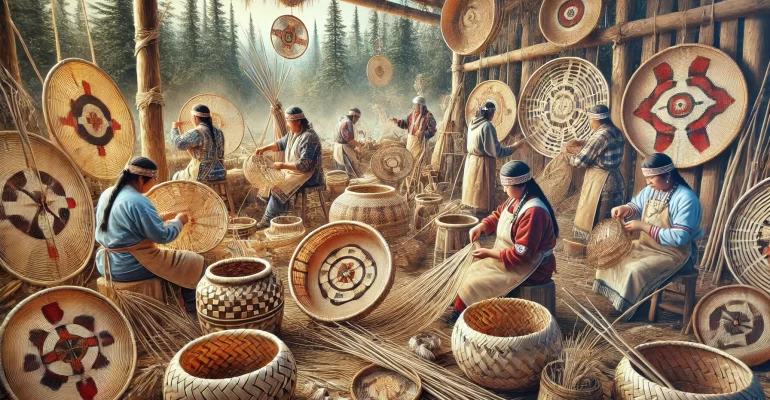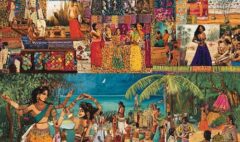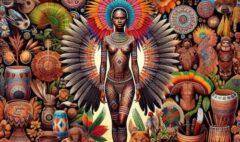Weaving Wonders: The Beautiful Art of Indigenous Basket Making in Canada
Weaving Wonders: The Beautiful Art of Indigenous Basket Making in Canada
Hello, art lovers and curious minds! Today, we’re going to explore the wonderful world of Indigenous basket weaving in Canada. This isn’t just about making containers – it’s an art form that tells stories, connects people to the land, and keeps ancient traditions alive. So, let’s dive in and discover the magic of basket weaving together!
What is Basket Weaving?
Let’s start with the basics. Basket weaving is the art of making containers by intertwining flexible materials. It sounds simple, but there’s so much more to it!
In Indigenous cultures, basket weaving is:
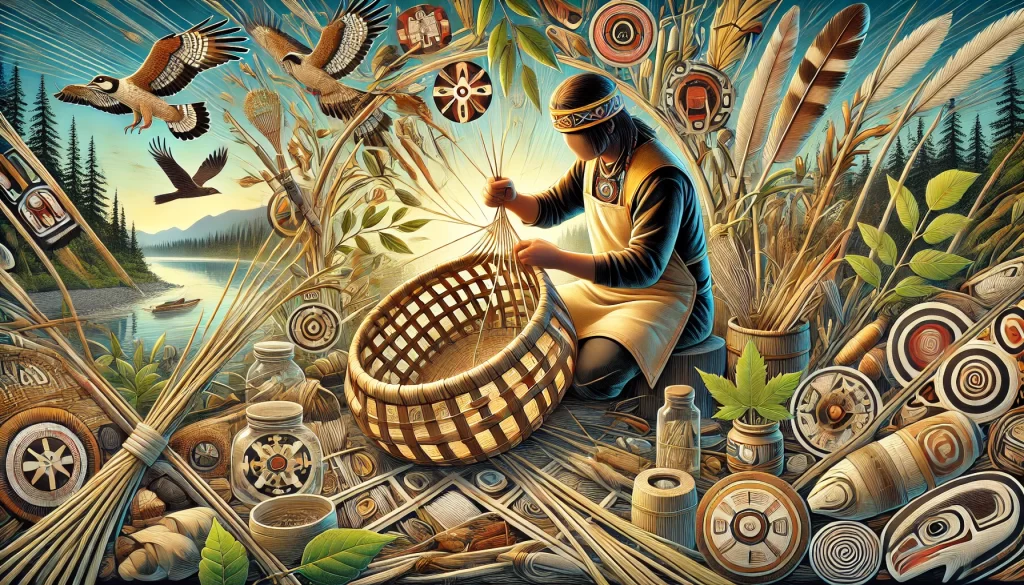
– An ancient skill passed down through generations
– A way to create both beautiful and useful objects
– A practice that connects people to the land and its resources
– An art form that carries cultural meanings and stories
Imagine creating something with your hands that your great-great-grandparents might have made too. That’s what basket weaving is like for many Indigenous people!
The Amazing Materials: Nature’s Gift of Indigenous Basket Making in Canada
One of the coolest things about Indigenous basket making is the materials used. Basket makers don’t just go to a store to buy what they need – they gather materials from the land around them.
Common materials include:
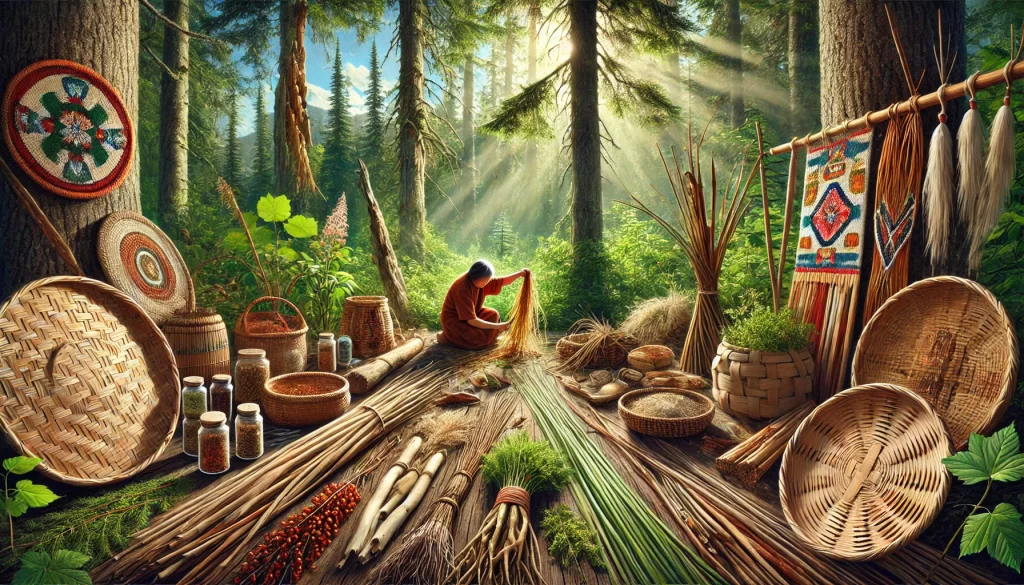
– Cedar bark: The inner bark of cedar trees is stripped, processed, and woven.
– Spruce roots: Long, flexible roots are dug up, cleaned, and split for weaving.
– Sweetgrass: This fragrant grass is often used for decorative elements.
– Birch bark: The outer bark of birch trees can be used to make sturdy containers.
– Willow: Flexible willow branches are great for making sturdy baskets.
– Rushes and grasses: Various types are used, depending on what grows locally.
Each of these materials needs special preparation. For example, cedar bark is harvested in the spring when it’s easiest to remove from the tree. It’s then split into thin strips and sometimes soaked to make it more flexible. The choice of materials isn’t just about what’s available – it’s also about respecting the land. Traditional basket makers only take what they need and do so in a way that doesn’t harm the plants.
Techniques of Indigenous Basket Making : The Art of Intertwining
Now, let’s talk about how these materials become baskets. There are many different techniques, and each Indigenous nation might have its own special ways of weaving. But here are some common methods:
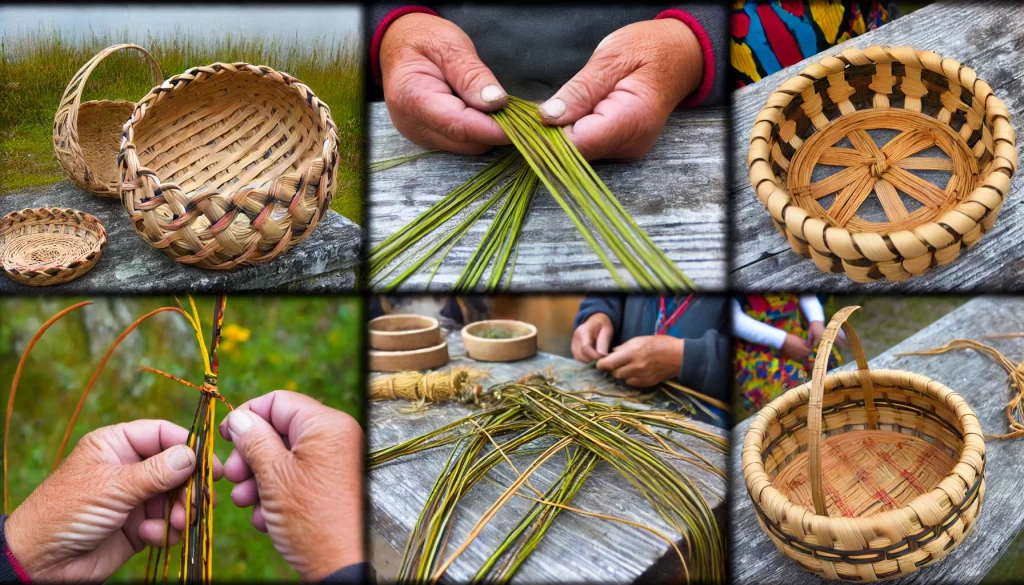
- Plaiting: This is like braiding. Strips of material are woven over and under each other to create a flat surface. It’s often used for the bottom of baskets.
- Coiling: In this technique, a continuous bundle of material (like grass) is coiled around itself and sewn together. It can create very sturdy, tight baskets.
- Twining: Two flexible weavers are twisted around a stiffer material (like spokes in a wheel). This can create beautiful patterns.
- Wicker weaving: Flexible materials are woven around stiffer spokes. This is great for making openwork baskets.
Each technique requires skill and practice. Basket makers need to control the tension of their weaving to keep the basket’s shape even. They also need to know how to start and finish a basket neatly.
Styles and Shapes of Indigenous Basket Making: A Basket for Every Need
Indigenous baskets come in all sorts of shapes and sizes, each designed for a specific purpose:
– Berry baskets: Small, often with a handle, perfect for collecting wild berries.
– Storage baskets: Large and sturdy, used for keeping clothes or food.
– Cooking baskets: In some cultures, tightly woven baskets were used for cooking with hot stones.
– Burden baskets: Big baskets worn on the back for carrying heavy loads.
– Ceremonial baskets: Special baskets used in cultural ceremonies or as gifts.
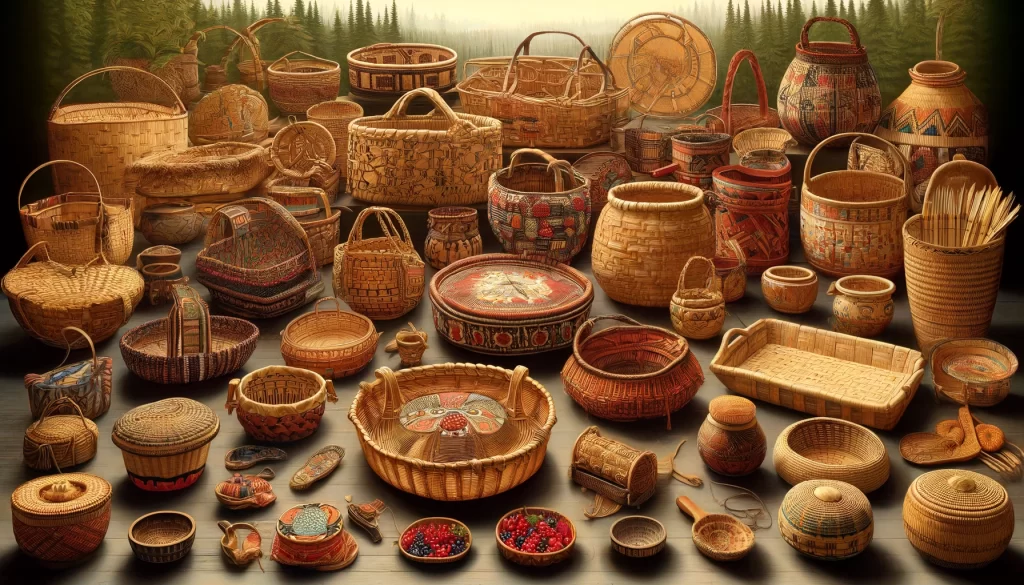
The shape of a basket isn’t just about its use – it can also tell you where it’s from. For example, Haida baskets often have a distinctive round base that curves up to a square top.
Patterns and Designs of Indigenous Basket Making: Weaving Stories
One of the most beautiful things about Indigenous baskets is the patterns woven into them. These aren’t just for decoration – they often have deep meanings:
– Geometric patterns: Might represent mountains, rivers, or other parts of the land.
– Animal designs: Could show important animals in the culture or family crests.
– Plant motifs: Might depict local plants or foods.
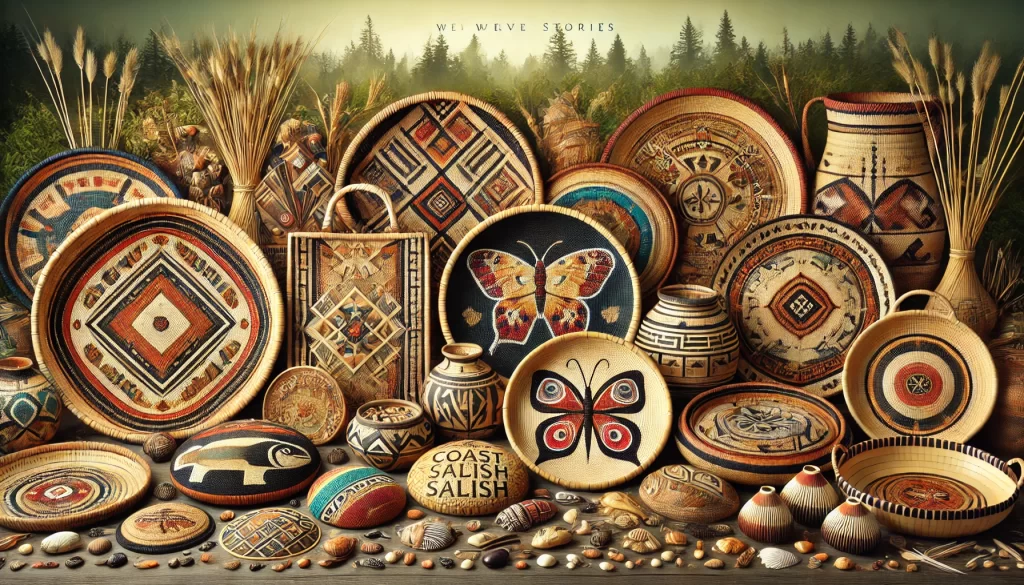
These patterns are created in different ways:
– Using different colored materials
– Changing the weaving technique to create texture
– Adding elements like shells or porcupine quills
Each nation has its own traditional designs. For example, Coast Salish baskets often feature a beautiful butterfly pattern created through the weaving technique.
The Cultural Heartbeat: Why Indigenous Basket Making Matter
Basket weaving is much more than just making containers. It plays a big role in many Indigenous cultures:
- Passing down knowledge: Learning to weave is a way to learn about plants, the land, and cultural stories.
- Economic importance: Selling baskets has been an important source of income for many Indigenous communities.
- Cultural identity: Basket designs can show which nation or family someone belongs to.
- Ceremonial significance: Special baskets are used in ceremonies like weddings or coming-of-age rituals.
- Connection to the land: Gathering materials and weaving helps keep people connected to their traditional territories.
- Artistic expression: Baskets are a way for weavers to show their creativity and skill.
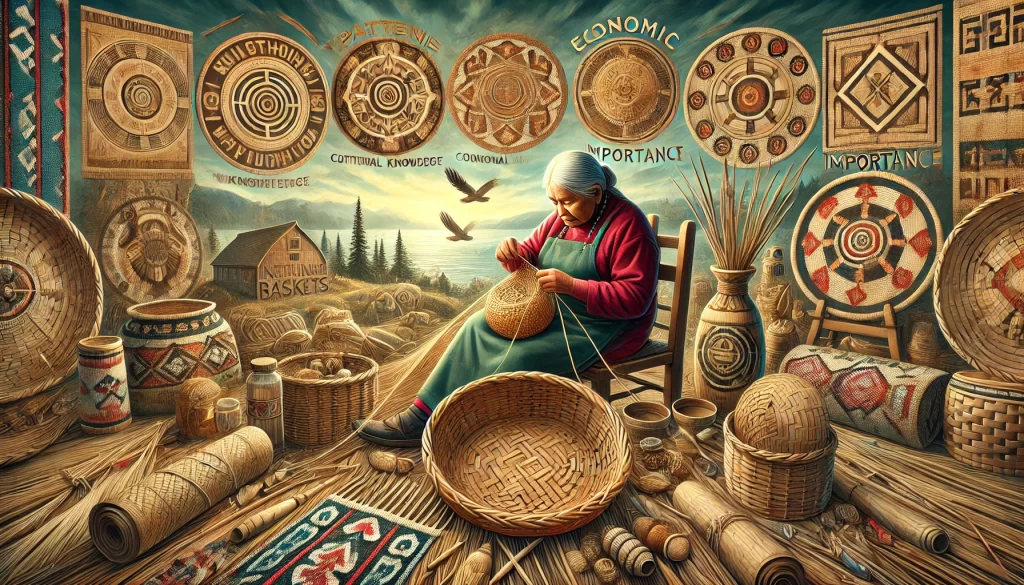
“When I weave a basket,” says Elder Mary Sweetgrass, “I’m not just making something to hold things. I’m holding onto my culture, weaving our stories and our connection to the land into every row.”
Learning and Sharing: Keeping the Tradition Alive
Like many Indigenous art forms, basket weaving faced challenges. Policies that separated Indigenous people from their lands and cultures made it hard to keep traditions alive. But today, there’s a wonderful revival happening! Many communities are working to keep basket weaving strong:
– Elders teaching young people the traditional techniques
– Cultural centers offering workshops
– Artists innovating with new designs while honoring traditional methods
– Museums working with Indigenous communities to properly care for and display historical baskets
WOCA Group’s Basket Weaving Circle: Join the Fun!
Here at WOCA Group, we’re excited to support the beautiful tradition of Indigenous basket making. That’s why we’ve started a monthly Basket Weaving Circle! What’s a Basket Weaving Circle? It’s a gathering where people come together to learn about and practice basket weaving. Our Basket Weaving Circle is:
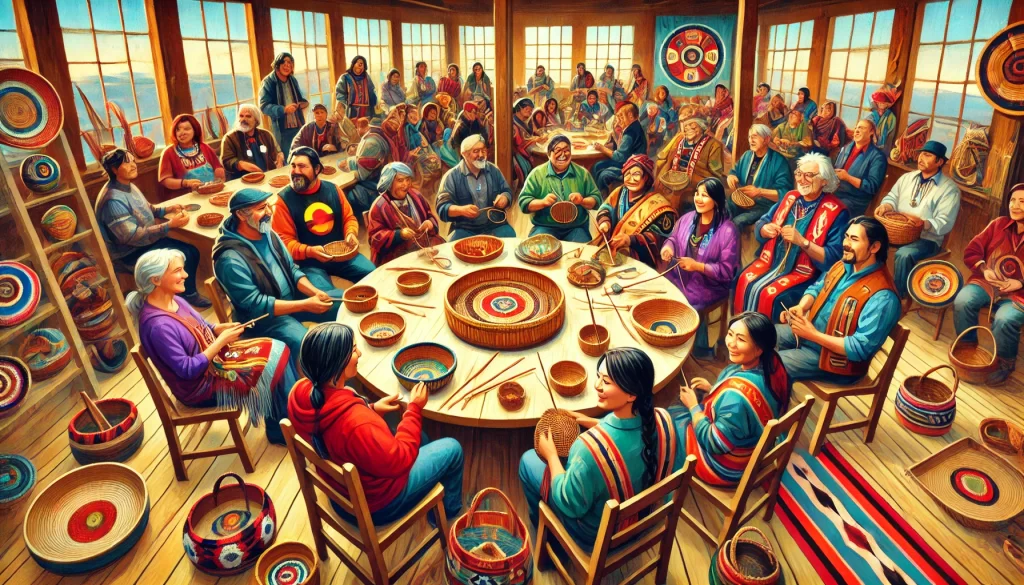
– Open to everyone: Beginners and experienced weavers are all welcome.
– Led by Indigenous artists: Learn from skilled weavers who share their knowledge and stories.
– A chance to create: Make your own small basket or weaving project.
– A community event: Meet new friends and learn about Indigenous cultures.
“Our Basket Weaving Circle is like a little family,” says Lisa Communityweaver, WOCA Group’s event coordinator. “We laugh, we learn, and we create beautiful things together. It’s a wonderful way to connect with Indigenous cultures and with each other.”
Appreciating Baskets: More Than Just Looking
If you’re interested in Indigenous baskets, here are some ways to appreciate them respectfully:
- Learn the stories: When you see a basket, ask about its origin and the meanings of its designs.
- Support Indigenous artists: If you buy a basket, try to purchase directly from Indigenous makers or reputable galleries that support them.
- Attend events: Look for basket weaving demonstrations or exhibitions in your area.
- Respect the process: Remember that each basket represents hours of work and generations of knowledge.
- Care for baskets properly: If you own a basket, learn how to store and handle it carefully to preserve it.
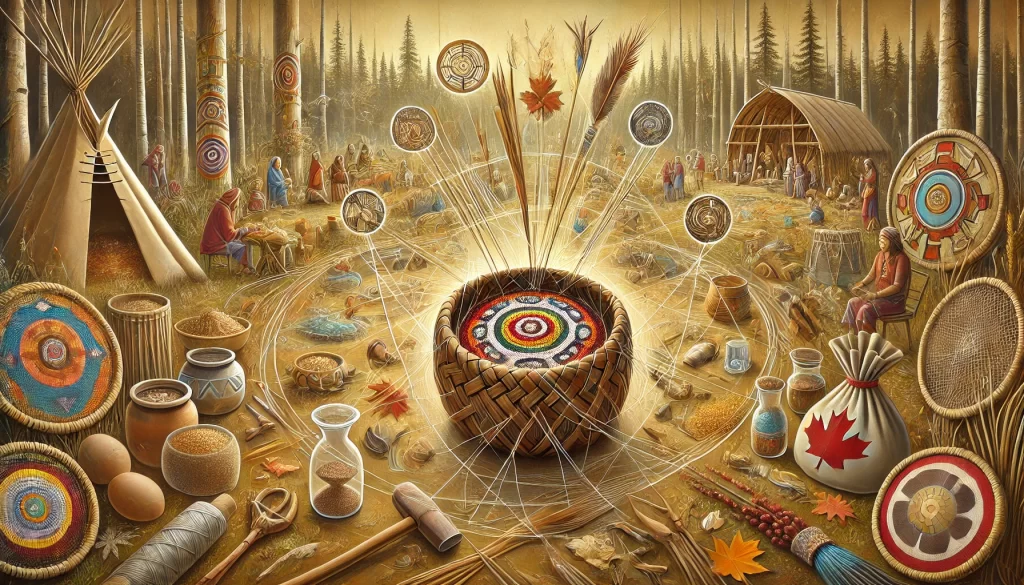
Weaving Our Way to Understanding
As we come to the end of our basket weaving journey, let’s remember what we’ve learned:
- Basket weaving is an ancient and important Indigenous art form.
- It uses materials from the land, connecting people to their territories.
- There are many techniques and styles, each with its own beauty and purpose.
- Basket designs often carry deep cultural meanings.
- Learning to weave is a way of passing down cultural knowledge.
- There are respectful ways for everyone to appreciate and learn about this art.
- WOCA Group’s Basket Weaving Circle is a great way to experience this tradition firsthand!
Indigenous basket weaving is like a beautifully woven thread connecting past, present, and future. Each basket carries within it the knowledge of ancestors, the creativity of the weaver, and the promise of continuing traditions. The next time you see an Indigenous basket, take a moment to really look at it. Remember that you’re not just seeing a container – you’re glimpsing a living tradition, a piece of art, and a carrier of culture, all woven together with incredible skill and care.
Now it’s your turn! Have you ever tried basket weaving or seen it being done? What amazes you most about this art form? Share your thoughts or experiences in the comments below. And don’t forget to check out WOCA Group’s Basket Weaving Circle – who knows, you might discover a new passion or make some wonderful new friends! Let’s keep celebrating and supporting the beautiful art of Indigenous basket making together!

